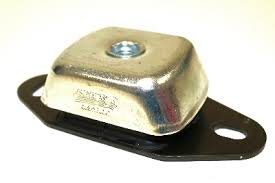Personally, if mounts are still within their serviceable limits I wouldnt change them.
The mounts on our 30,000 pound, twin-engine cabin cruiser were getting very tired when we bought the boat in 1998. The boat was then 25 years old. We were told by the engine surveyor that the mounts were nearing the end of their service life but they still had some time left on them before there would be metal to metal contact. This was confirmed by the friend we took with us to California to inspect, sea trial, and survey the boat. The friend until his recent retirement was the head of the engineering department at Alaska Diesel aka Northern Lights/Lugger. So he knows a wee bit about engine mounts.
Five years later an insurance surveyer noted that some of the mounts had reached the metal-to-metal stage. So we had all the mounts replaced.
This is a boat made in 1973 and it has all the vibrations machines this old and with this generation of diesels tend to develop. I have to say that the new mounts, which were very obviously putting a lot more rubber between the metal components of the mounts than the original, collapsed mounts, made not one iota of difference to the
discernible vibrations of the boat.
So if you're thinking that new mounts will reduce the vibrations you feel when you run the boat, they might..... and they might not. Which is why I say replace engine mounts when the old ones have reached the ends of their service lives. Otherwise you may be changing something out that doesn't need changing yet for no discernible benefit.
There are different kinds of mounts that can noticeably reduce the vibration transmitted to an engine stringer. These are made with softer rubber. However, they can also affect the engine's alighnment. So switching to this type of mount may require a different kind of shaft coupler to be installed, one which allows the engine to move around a bit more without affecting the shaft alignment.
So make sure you get all the correct and accurate information you need from a truly credible source before making a change in the type of mount your boat was built with. That source, by the way, is not me.





